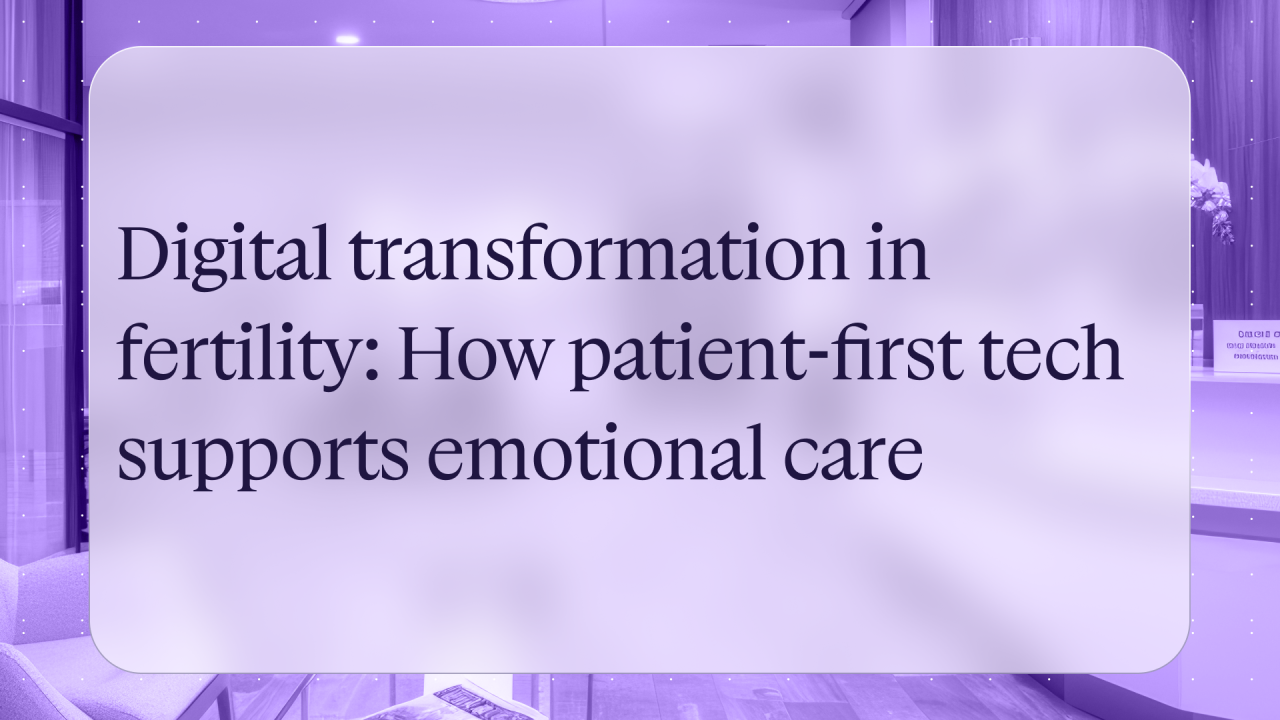Digital transformation in fertility: How patient-first tech supports emotional care

IVF is a medical journey shaped by deep emotional complexity.
Patients often feel overwhelmed, anxious, and vulnerable. They’re navigating hope, uncertainty, and countless decisions, sometimes all within the same day.
Technology in fertility clinics is often viewed as a way to improve efficiency. But when designed with empathy, it does far more than that: it gives patients clarity, reassurance, and a sense of control in an otherwise unpredictable process.
Here’s how digital transformation can actively support the emotional wellbeing of patients, not just their medical journey.
1. Reducing anxiety through clear communication
Uncertainty is one of the biggest emotional stressors in fertility treatment. Not knowing what’s happening next. Waiting for answers. Wondering if something’s been missed.
When communication is inconsistent or fragmented- spread across emails, phone calls, and forms- patients can quickly feel lost.
Patient-first tech solves this by centralising communication and making timelines visible. When patients know what to expect and when, it reduces anxiety and restores a sense of calm.
2. Creating a feeling of safety between appointments
Outside of scan rooms and consultations, many patients feel alone in the process.
A well-designed patient portal acts as a secure space where patients can check medication instructions, read updates, or message their clinic. It doesn’t replace the personal connection- it reinforces it, especially during long stretches of waiting or uncertainty.
Access to information and support 24/7 doesn’t just improve logistics. It helps patients feel emotionally safer, even when no one’s physically present.
3. Preventing overwhelm with information that’s easy to absorb
Fertility treatment involves a flood of new terms, protocols and instructions. In the early stages especially, patients are asked to retain a huge amount of information.
When that’s delivered in rushed phone calls or as lengthy PDF attachments, it can lead to overwhelm and mistakes.
Patient-first platforms simplify this experience. They break down next steps into manageable formats: bite-sized instructions, checklists, visual plans. This helps patients absorb what they need, when they’re ready, and revisit it as often as they like.
4. Supporting emotional confidence by reducing friction
When a clinic’s systems are disjointed, patients feel it repeating their information, chasing messages, or getting mixed responses from different teams.
This erodes trust. And in fertility care, trust is everything.
Digital transformation builds emotional confidence by ensuring consistency. It means the entire care team is aligned. Patients feel seen, remembered, and supported- even across departments or sites.
5. Giving patients back a sense of control
Fertility treatment often feels like something happening to the patient. Plans change. Decisions are time-sensitive. The outcomes aren’t guaranteed.
Giving patients visibility over their journey, through a timeline, reminders, and clear progress tracking- can help return a sense of control. Even small features like knowing who to contact, seeing that a message was received, or understanding what’s next can ease emotional pressure.
What emotionally supportive tech looks like
True patient-first technology in fertility care is:
- Designed to reduce stress, not add to it
- Easy to use- even in moments of overwhelm
- Clear and empathetic in its language
- Available when patients need it most
- Aligned with real clinical care, not separate from it
At Salve, we don’t believe digital tools should replace human care. We believe they should protect it and extend it.
By supporting patients between appointments, reducing their stress, and offering calm in the chaos, emotionally intelligent tech helps clinics deliver care that’s both clinically excellent and deeply compassionate.
Because feeling supported shouldn’t depend on being in the room.

.png)



.jpg)





